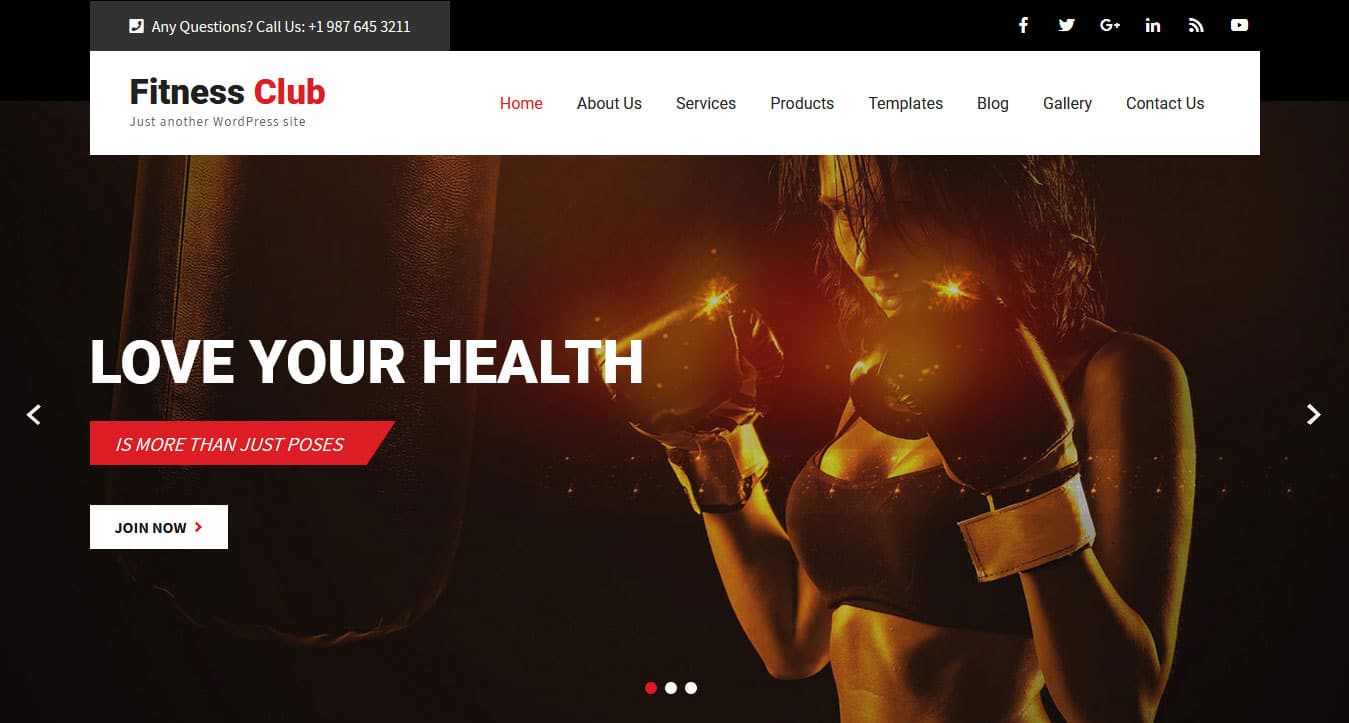
Designing a fitness website is more than creating an online presence. It’s about providing a seamless experience to fitness enthusiasts and gym owners alike. A well-designed fitness website can attract new clients, retain existing ones, and ultimately grow your business. In this blog, we’ll explore key features that will make your fitness website stand out.
-
Mobile Responsiveness
Staying Accessible on the Go
In today’s digital age, many people access websites from their mobile devices. Therefore, mobile responsiveness is crucial for any fitness website design. A mobile-responsive site adapts to any device, whether it’s a smartphone, tablet, or desktop computer. This ensures that users have a smooth experience no matter what device they use. If your website isn’t mobile-friendly, you risk losing potential customers who are always on the go.
-
User-Friendly Navigation
Making the Journey Smooth
The easier it is for users to find what they’re looking for, the more likely they are to stay on your site. User-friendly navigation is key to achieving this. Ensure that menus are clearly labeled and easy to find, and consider using a search bar for added convenience. Categories should be intuitive, guiding users directly to class schedules, booking options, trainer profiles, and more. When navigation is smooth, visitors are more likely to turn into paying clients.
-
Class Schedules and Booking
Convenience at Your Fingertips
One of the most important features for a fitness website is an online class schedule and booking system. This feature allows members to easily see when classes are available and book their spot right from the website. For gym owners, it simplifies managing class capacities and schedules. This level of convenience can significantly improve user satisfaction and streamline your operations.
-
Trainer Profiles
Showcasing Expertise and Personality
People want to know who will be guiding them in their fitness journey. Trainer profiles can provide this information, showcasing your team’s qualifications, specialties, and personalities. Including photos, bios, and even personal training philosophies can help build trust and encourage potential clients to sign up for classes or personal training sessions. Highlighting your trainers’ expertise can also set your gym apart from the competition.
-
Blog Section
Sharing Knowledge and Building Community
A blog section can be a valuable addition to your fitness website. Regularly updated blog posts can provide useful information, tips, and insights related to fitness and wellness. This not only helps establish your gym as an authority in the field but also engages visitors and encourages them to return. A well-maintained blog can attract new visitors through search engines, expanding your community and potentially increasing memberships.
-
Testimonials and Reviews
Building Trust and Credibility
Social proof is powerful. Including testimonials and reviews from satisfied clients can build trust and credibility for your gym. Positive feedback from real people reassures potential customers that they can expect a great experience. Make sure to feature these testimonials prominently on your site, perhaps on the homepage or a dedicated testimonials page. If possible, include photos or videos for added authenticity.
-
Integration with Wearable Devices
Personalizing the Experience
Many fitness enthusiasts use wearable devices to track their progress. Integrating these devices with your fitness website can offer a personalized experience for your users. By syncing data from fitness trackers, your website can provide customized workout plans, track progress, and offer insights based on real-time data. This level of personalization can enhance user engagement and loyalty, making your gym an integral part of their fitness routine.
-
eCommerce Integration
Expanding Services and Revenue Streams
If your gym offers merchandise or online training services, eCommerce integration is a must. A seamless online store allows members to purchase products like gym apparel, equipment, or supplements directly from your website. Additionally, offering online training programs can attract a wider audience, including those who may not be able to visit your gym in person. eCommerce integration can diversify your revenue streams and provide added value to your members.
Conclusion
Creating a standout fitness website involves more than just good looks; it’s about functionality and user experience. By incorporating these key features—mobile responsiveness, user-friendly navigation, class schedules and booking, trainer profiles, a blog section, testimonials and reviews, integration with wearable devices, and eCommerce capabilities—you can create a site that not only attracts but retains members. A well-designed fitness website can be a powerful tool in growing your gym’s community and success.
Ready to take your fitness website design to the next level? Implementing these features will ensure your site stands out and offers an exceptional user experience. Start today and see the difference it makes for your gym.
By focusing on these elements, your fitness website can become a hub for your community, driving engagement and growth for your gym. If you haven’t yet incorporated these features, now is the time to start. Your future members are out there, and a well-designed website will help bring them in. Happy designing!